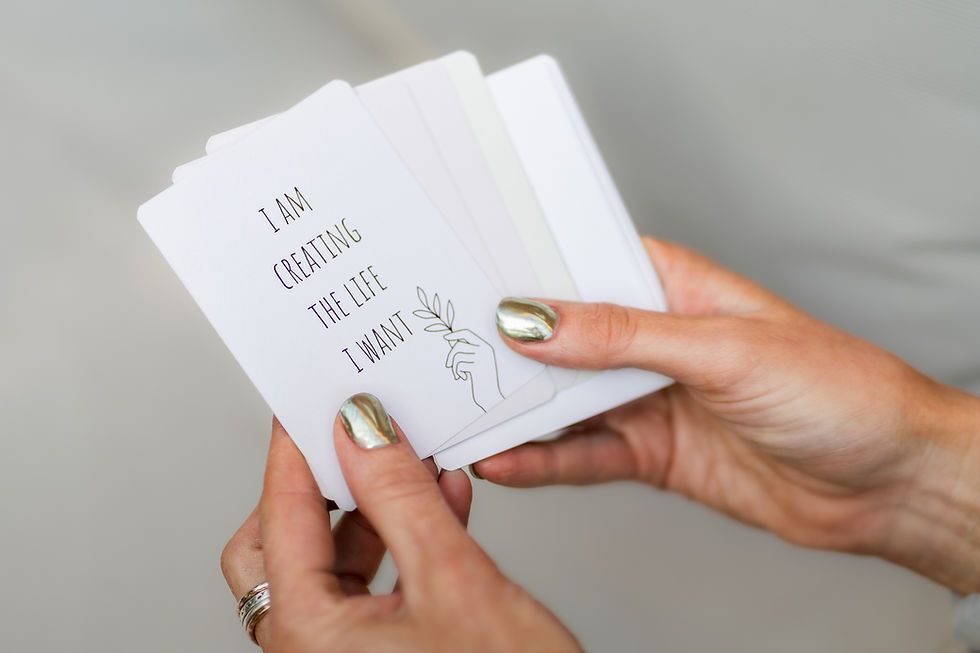Is It Anxiety or Just Being Human? A Trail Tool for Overwhelm
- Sarah Hopton

- May 29
- 3 min read
Anxiety is loud.
It spins in your chest. Buzzes in your hands. Loops thoughts like a record stuck on the wrong lyric.
Sometimes it’s a low hum you carry all day. Sometimes it crashes in like a storm.
It can make you question everything—your decisions, your relationships, your body, even your worth. It can make you feel like you're too much or not enough. Or both, somehow, at once.
And yet, so often, when I sit with clients who describe feeling anxious all the time, what I see underneath isn’t disorder. It’s an adaptation.
When Anxiety Is a Response, Not a Problem
In a dysregulated world—where the pace is punishing, expectations are relentless, and safety often feels just out of reach—your body does what it knows.
It scans. It prepares. It worries.
Because somewhere along the line, it learned that being prepared might stop bad things from happening. That being vigilant might keep you loved. That being hyper-aware might keep you safe.
This is what we call hyperarousal—a nervous system stuck in a state of alert, even when you’re not in danger. It’s exhausting. But it’s not your fault. It’s your body trying to protect you.
The Problem with Pathologising It
We’re so quick to label ourselves as broken.
But what if anxiety isn’t the problem?What if it’s your system working too hard because it didn’t feel held?What if it’s grief in disguise?What if it’s loneliness wrapped up in worry?What if it’s the cost of being so emotionally attuned, so responsible, so aware, for far too long?
Sometimes anxiety is your brain saying, “This matters.”Sometimes it’s your body saying, “I don’t feel safe.”Sometimes it’s both.
Either way, the answer isn’t always deep breathing or logic. Sometimes, it’s slowing down long enough to notice what’s actually going on inside.

Trail Tool: The Colour-Zone Check-In
This simple, somatic tool helps you name your state without judgment, bringing awareness and compassion to your inner landscape.
Pause. Breathe. Then ask yourself:
Am I in the Green Zone? (Steady, grounded, connected)
The Yellow Zone? (Tense, scattered, on edge)
The Red Zone? (Panicked, frozen, overwhelmed)
Now, place your hand over your chest or stomach and say: “This is where I am. And I’m allowed to be here.”
You don’t need to fix it. Just name it. That alone shifts your nervous system from reactivity to reflection.
It’s not mindfulness for the sake of productivity. It’s a return to self-awareness that doesn’t shame or rush you.
You Don’t Have to Earn Calm
So many clients I work with believe they have to deserve rest. That they need to figure everything out first. That calm is something they get after they’ve solved their problems.
But healing anxiety doesn’t mean erasing it. It means getting closer to it. Learning its patterns. Understanding its roots. And letting your body know: we don’t have to do this alone anymore.
Tools for the Trail are here for the days when your brain won’t switch off. When your heart is racing and you don’t know why. When you feel like you’ve done everything right and still can’t breathe fully.
You’re not broken. You’re responding. And with the right support, you can learn to respond differently—with kindness, with presence, and with the tools that actually meet you where you are.
If that’s something you need, you can get in touch here.
With warmth and wildness,
Sarah x
BACP & NCPS Accredited Psychotherapist
Rewild your mind. Come home to yourself.



Comments